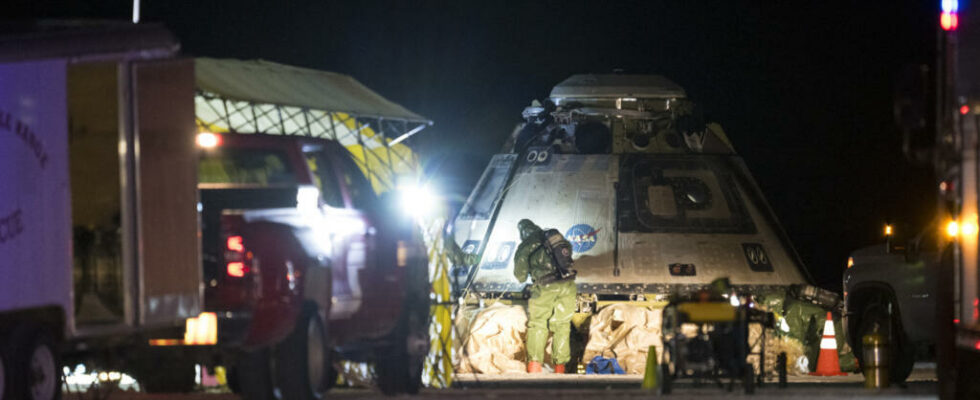Boeing’s Starliner capsule, whose adventures have given rise to a real soap opera, successfully landed on Earth on Saturday, September 7, but without the astronauts who had taken it to the International Space Station (ISS). NASA deemed the risk too great for a manned flight, due to persistent concerns about the Boeing model, already in the hot seat due to problems with its airliners.
3 min
Boeing’s Starliner capsule landed gently at 04:01 UTC at White Sands Space Force Base in New Mexico, in the southwestern United States. Its descent was slowed by parachutes and cushioned by airbags. It had left the ISS about six hours earlier, according to the broadcast. NASA videoGround crews reported hearing booms as the craft, hurtling through the night sky at supersonic speed, reached temperatures of 3,000 degrees Fahrenheit as it re-entered the atmosphere.
Boeing’s reputation, already tarnished by recent problems with its airlinershad been again weakened in June after thruster failures and helium leaks were detected during the capsule’s maiden manned flight. Boeing has stepped up its efforts to convince NASA of the safety of the device. But the space agency preferred not to take the risk and delay the return of the astronauts: they will wait to use the capsule Crew Dragon SpaceX. Initially scheduled for eight days, Butch Wilmore and Suni Williams’ mission will extend to more than eight months in thespace.
Also readAfter years of delays, Boeing successfully launches Starliner to the ISS
Will Beoing regain NASA’s trust?
Steve Stich, head of NASA’s commercial human spaceflight program, said this week that despite Boeing’s confidence in its projections, the agency ” was not comfortable » to proceed with Starliner « due to the uncertainty around the model “Now that the return flight has been without incident, Boeing could regain NASA’s trust and obtain new approvals for manned flights.
At a press conference after the flight, where Boeing representatives were absent, NASA hailed the successful landing. It was a bullseye landing. “We’re not going to be able to do that,” Stich said, while acknowledging that problems remained, such as a thruster failure and a temporary loss of guidance. He added that it was too early to determine whether the Starliner flight scheduled for August 2025 would be manned, and that analyses were needed to assess what changes would be needed.
Ken Bowersox, NASA’s associate administrator for space missions, also congratulated the Boeing team: “ NASA and Boeing learned a lot about the Starliner in the most extreme environment possible. “He added that the agency looks forward to continuing certification of the spacecraft for crew rotation missions to the ISS.
NASA ordered spacecraft from Boeing and SpaceX ten years ago to transport its astronauts to the ISS, but it is the company thatElon Musk which, with Crew Dragon, has been playing the role of the American space taxi for four years. This crewed Starliner flight, carried out with years latewas to mark the final step before the launch of regular operations.
Also readLeaving two astronauts stranded on the ISS, Boeing’s Starliner returns to Earth
